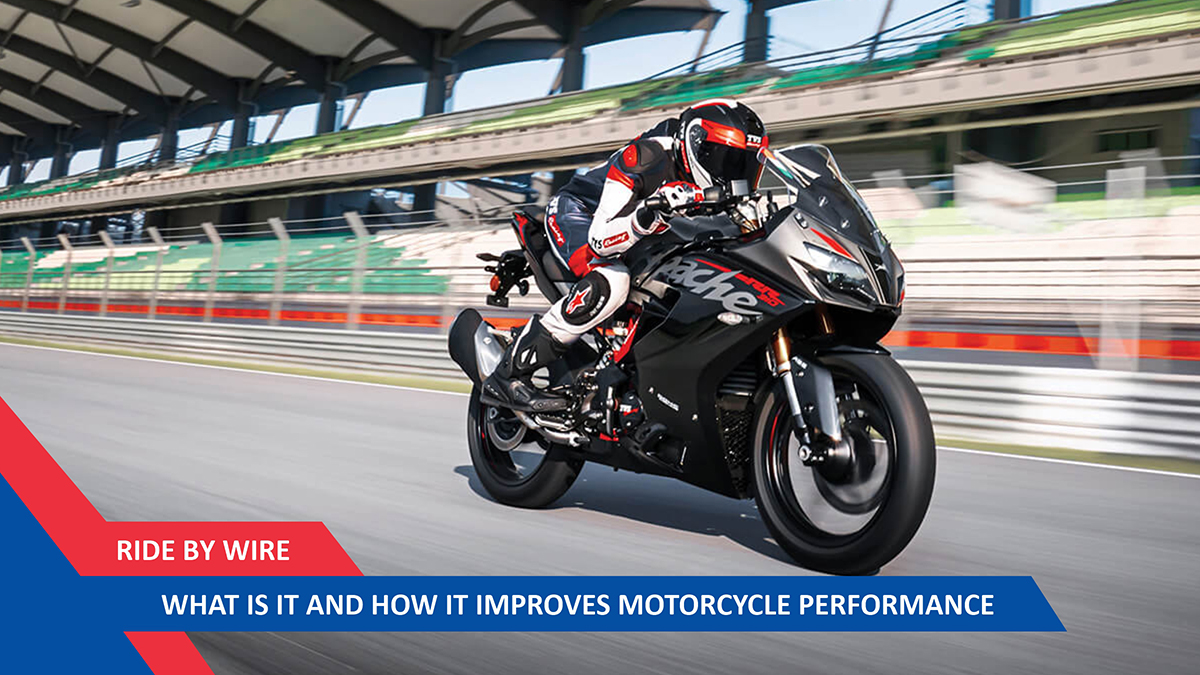Electronics are fast replacing conventional components on automobiles. Complicated mechanical assemblies are getting replaced by sensor driven electronic devices which are more compact, precise, and easy to replace. They are expensive to manufacture, but their impact on the overall performance of a machine is too big. Conventional cable driven throttle is one such component which is increasingly replaced by the more modern ride by wire throttle systems. Ride by wire was seen only on big capacity, expensive motorcycles earlier, but with the introduction of electronic components on everyday motorcycles, the technology is getting increasingly commonplace even on mainstream machines. In this article, we will discuss ride by wire throttle systems, how they work, their uses, advantages, and disadvantages.
Know More
What is ride by wire throttle
In conventional motorcycles, the amount of air to be fed into the combustion chamber is determined exactly by how much you wring its throttle. A physical cable, connected to the accelerator throttle at one end and the butterfly valves of the intake on the other control the amount of air fed into the combustion chamber. Oftentimes, an abrupt twist of the wrist by the rider, in higher gears and low engine speeds feeds too much air into the combustion area, leading to improper fuel combustion, and sometimes even to the engine stalling. This entire connection, in conventional motorcycles, is purely mechanical. There isn’t an electronic brain calculating how much air must be fed into the engine based on the rpm, gear engaged, load or wheel speed. This affects efficiency, smoothness, and performance. With ride by wire throttle, bike makers have figured a way around this problem. Ride by wire disposes of the mechanical cable connecting the accelerator throttle with the butterfly valve, replacing it with a throttle position sensor and an electric wire that sends the signal to the ECU (Engine Control Unit). As you would imagine, the wire here is an electric wire, replacing the cable, which again, is a ‘wire’ in a way. Some people get confused with that nomenclature, as effectively, even a conventional throttle cable is a wire, and the two terms are often used interchangeably. We will discuss difference and understand well why ride by wire is called so.
Ride by wire throttle eliminates any mechanical linkages between the throttle body and the hand accelerator. While it’s still ultimately the rider who provides throttle inputs, the system makes use of sensors including ECU and actuators to have a more accurate control on the air-fuel supply. The sensor near the accelerator constantly reads the circular movements of the hand throttle and continuously sends that information to the ECU. The ECU, on its part, is constantly monitoring the engine speed, gear engaged, wheel speed, unburnt oxygen or fuel in the exhaust system and other critical parameters to ensure that the air-fuel mixture fed into the combustion chamber is always optimum. All this analysis happens in real time, at a very fast rate, allowing the system to instantly adjust the butterfly valve’s position for the most optimised combustion. The system is smart and is equipped to override the throttle inputs if it’s not in-line with what’s ideal for that specific instance. For example, if the rider opens the accelerator throttle too much in a high gear, at a low speed, the system can increase the butterfly valve opening at a slower rate for the injection system to catch up. In some cases, the system can even reduce the valve opening rather than increasing it, even when the accelerator throttle is whacked wide open. This fine-grained control over the air and fuel supply equips the system to deliver the best blend of performance and fuel-efficiency along with the lowest emissions.
Advantages of ride by wire technology
As evident from the explanation above, a ride by wire system hands the control of the butterfly valve, and resultantly, the air fuel mixture to the ECU. This enables engineers to incorporate other advanced electronics-based safety technologies on modern motorcycles. For example, traction control systems require the power to the rear wheel to be reduced or cut when slippage is detected. In conventional cable driven throttle systems, that’s not possible. But with ride by wire systems, the ECU can reduce or close the air fuel supply and cut power if it detects slip. Based on the same principle, various new features, and technologies such as cruise control, cornering ABS and different riding modes for different conditions can be implemented on motorcycles making use of ride by wire. Some other advantages of a ride by wire system include better fuel-efficiency and smoother acceleration for the motorcycle.
Disadvantages of ride by wire systems
Clearly, ride by wire systems are an advancement in two-wheeler technology and there aren’t really any downsides if such a system is well implemented. Being more advanced, however, ride by wire systems involve more complex componentry and are more expensive to produce. On well-built motorcycles, they are very robust and seldom fail, but if they do, they are not as easy to replace as a simple accelerator cable and may require you to make a trip to the service station, with the costs also being on the higher side. Generally speaking, ride by wire systems are an advancement in motorcycle tech, and their advantages far outweigh their downsides.




Comments (14)
9886643450
02 Apr 2023
9886643450
02 Apr 2023
9886643450
02 Apr 2023
katana
26 Apr 2023
katana
02 May 2023
katana
24 May 2023
katana
07 Jun 2023
Billy Moran
18 Jun 2023
Very well explained, thank you
Jerry George
10 Feb 2024
The information provided is quite helpful for a automotive enthusiast
Greg Elliott
24 Mar 2024
I have an Indian Scout bobber twenty and I think the ride by wire throttle is fantastic
ChrisCoeno
29 Apr 2024
David Aitken
16 Jul 2024
First class description
Laljeet turiya
11 Jul 2025
Rtr1604
Phil
29 Sep 2025
Well written. Having been a computer programmer and systems administrator, I found your explanation easy to follow and understand.